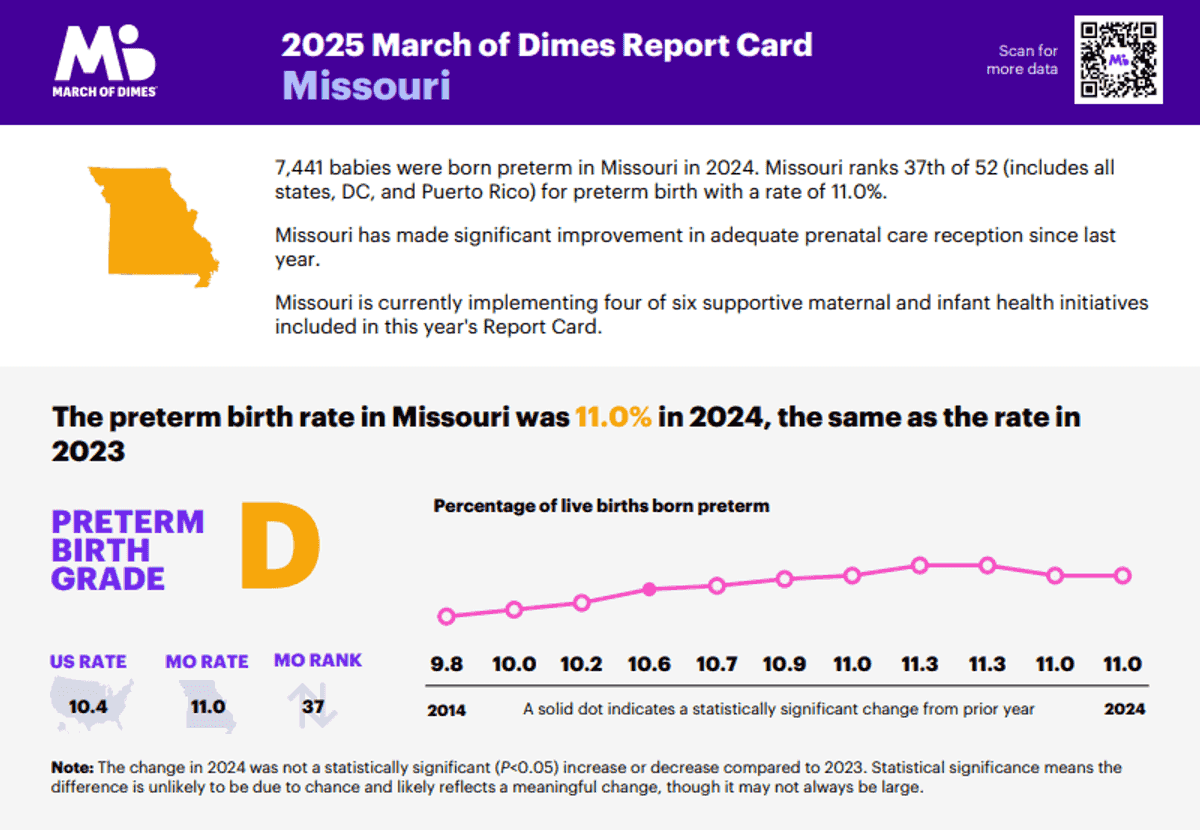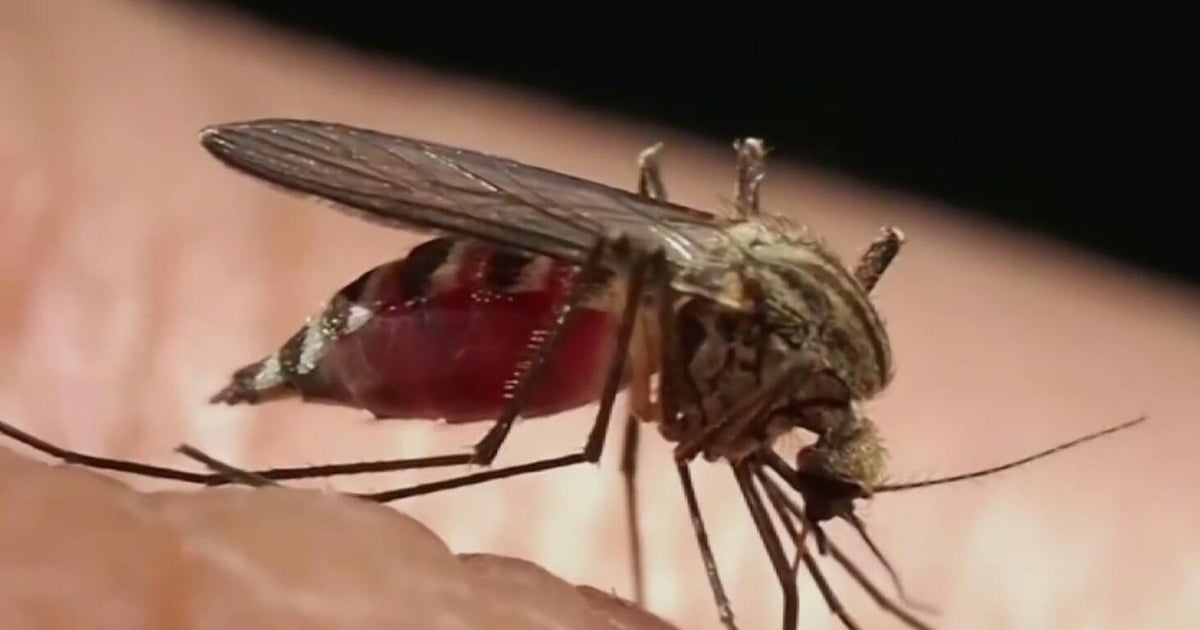Missouri among worst states for infant, maternal health; Cape County worse than state in key areas – seMissourian

Report on Maternal and Infant Mortality in Missouri: A Sustainable Development Goals Perspective
Alignment with SDG 3: Good Health and Well-being
An analysis of recent data from Missouri reveals significant challenges to achieving Sustainable Development Goal 3 (Good Health and Well-being), particularly concerning targets for reducing maternal and infant mortality. The United States is identified as one of the most dangerous high-income nations for childbirth, a situation reflected in state-level statistics.
- Infant Mortality Rate: Despite a slight improvement from 2022, 441 infants died before their first birthday in Missouri during 2023. The state ranks 33rd nationally for infant deaths, indicating a critical gap in ensuring child survival as outlined in SDG Target 3.2.
- Leading Causes of Infant Death (2021-2023): The primary causes of infant mortality were identified as birth defects, preterm birth, sudden unexpected infant death (SUID), and accidents.
- Maternal Mortality Factors: A recent maternal mortality report highlighted that mental health conditions, including substance use, were responsible for one-third of pregnancy-associated deaths. This underscores the importance of integrating mental health services into maternal care to meet SDG Target 3.4, which promotes mental health and well-being.
Addressing SDG 10: Reduced Inequalities
The data exposes profound disparities in health outcomes, directly challenging the objectives of SDG 10 (Reduced Inequalities). Systemic factors such as poverty, racism, and violence contribute to an unequal distribution of risk among different populations.
- Racial and Ethnic Disparities: Infants born to Pacific Islander mothers experienced mortality rates 2.5 times the state average between 2021 and 2023. Mothers and babies of color continue to represent a disproportionate share of poor birth outcomes.
- Socioeconomic Disparities: Mothers insured by Medicaid also face an outsized portion of adverse outcomes, linking health status directly to economic vulnerability and challenging SDG Target 10.2, which aims to promote the inclusion of all, irrespective of economic status.
Policy Interventions and Their Connection to SDGs 1, 5, and 8
Missouri has implemented several policy measures aimed at improving maternal and child health outcomes. These initiatives align with multiple SDGs, including SDG 1 (No Poverty), SDG 5 (Gender Equality), and SDG 8 (Decent Work and Economic Growth).
Current Policy Strides
- Expanded Medicaid Coverage: The state recently expanded Medicaid coverage to one year postpartum. As of 2024, 38% of births were covered by Medicaid, a critical step toward achieving universal health coverage (SDG Target 3.8) and providing a social protection floor (SDG Target 1.3).
- Support Services: Missouri’s Medicaid program now reimburses for postpartum depression screening and allows for the reimbursement of doula services, enhancing the support structure for maternal health.
Recommendations for Further Progress
- Paid Parental Leave: A key recommendation from the March of Dimes report is the requirement for paid parental leave, which supports gender equality in caregiving (SDG 5) and promotes decent work (SDG 8).
- Enhanced Public Health Programs: Experts advocate for increased investment in community health, including the creation of more public health programs for mothers and infants, such as postpartum home visits.
- Systemic Support: Continued support for programs like Head Start and efforts to improve access to affordable childcare are essential for addressing the underlying social determinants of health.
Conclusion: A Call for Integrated Action to Achieve SDGs
The maternal and infant health crisis in Missouri is a complex issue that requires a concerted and multi-faceted effort at both local and federal levels. Achieving the targets set forth in the Sustainable Development Goals, particularly SDG 3 and SDG 10, necessitates an integrated approach that addresses not only clinical care but also the underlying social and economic inequalities. There is no simple solution; sustained investment in public health infrastructure, equitable policies, and comprehensive support systems for families is imperative for making meaningful progress.
Analysis of Sustainable Development Goals (SDGs) in the Article
1. Which SDGs are addressed or connected to the issues highlighted in the article?
- SDG 3: Good Health and Well-being: This is the most central SDG, as the article’s primary focus is on maternal and infant mortality in Missouri. It discusses the high rates of death, the leading causes (birth defects, preterm birth, mental health conditions), and the need for better healthcare services like postpartum screening, doula support, and community health programs.
- SDG 10: Reduced Inequalities: The article explicitly points out significant disparities in health outcomes. It highlights that “mothers and babies of color and mothers insured by Medicaid continue to make up an outsized portion of those with poor birth outcomes” and specifically notes that the infant mortality rate for children of Pacific Islander mothers is 2.5 times the state average. This directly addresses the goal of reducing inequalities based on race and economic status.
- SDG 1: No Poverty: The article links poor birth outcomes to poverty, noting it as a complicating factor. The discussion around Medicaid expansion, cuts to programs for low-income families like Head Start, and the need for affordable child care all connect the issues of maternal/infant health directly to the economic well-being and social protection systems for the poor and vulnerable.
2. What specific targets under those SDGs can be identified based on the article’s content?
- Target 3.1: By 2030, reduce the global maternal mortality ratio. The article directly addresses this target by discussing “pregnancy-associated deaths” and referencing Missouri’s “maternal mortality report.” The finding that mental health conditions account for one-third of these deaths underscores the challenges in meeting this target.
- Target 3.2: By 2030, end preventable deaths of newborns and children under 5 years of age. The article’s core focus is on infant mortality, stating that “441 babies still died before they turned 1 year old in Missouri in 2023.” This is a direct measure related to ending preventable deaths of young children.
- Target 3.4: Promote mental health and well-being. This target is identified through the article’s emphasis on mental health as a major factor in maternal mortality. It states, “Mental health conditions accounted for one-third of recent pregnancy-associated deaths,” and mentions postpartum depression screenings as a key intervention.
- Target 3.8: Achieve universal health coverage, including financial risk protection and access to quality essential health-care services. The article discusses Missouri’s expansion of Medicaid coverage through the first year postpartum, the reimbursement for doula services and depression screenings, and the fact that 38% of births were covered by Medicaid. These are all measures related to expanding health coverage and access to essential services for mothers.
- Target 10.2: By 2030, empower and promote the social, economic and political inclusion of all, irrespective of race, ethnicity, or economic status. The article highlights a failure to achieve this target by showing that “mothers and babies of color and mothers insured by Medicaid continue to make up an outsized portion of those with poor birth outcomes,” indicating a lack of equitable health outcomes for these groups.
3. Are there any indicators mentioned or implied in the article that can be used to measure progress towards the identified targets?
- Infant Mortality Rate: The article provides a direct indicator for Target 3.2 by stating the number of infant deaths in Missouri for 2023 (441) and noting the state’s national ranking (33rd).
- Maternal Mortality Data: While not providing a specific ratio, the article references a “maternal mortality report” and states that “Mental health conditions accounted for one-third of recent pregnancy-associated deaths.” This percentage serves as a specific indicator for understanding the causes of maternal mortality (Target 3.1) and the importance of mental health (Target 3.4).
- Disaggregated Health Data by Race/Ethnicity: The statistic that “infant mortality rates for children born to Pacific Islander mothers [are] 2.5 times the state average” is a clear indicator used to measure inequality in health outcomes (Target 10.2). This demonstrates how data can be broken down to reveal disparities.
- Health Service Coverage Rate: The article mentions that “38% of births were covered by Medicaid” in 2024. This figure is a direct indicator of the proportion of the population receiving health services through a specific social protection system, which is relevant for measuring progress towards universal health coverage (Target 3.8).
- Access to Specific Healthcare Interventions: The mention of Medicaid reimbursement for postpartum depression screenings and doula services implies that the rates of these screenings and the utilization of doula services can be used as indicators to measure access to quality maternal healthcare (Target 3.8).
4. Table of SDGs, Targets, and Indicators
| SDGs | Targets | Indicators |
|---|---|---|
| SDG 3: Good Health and Well-being |
3.1: Reduce maternal mortality.
3.2: End preventable deaths of newborns and children under 5. 3.4: Promote mental health and well-being. 3.8: Achieve universal health coverage. |
– Percentage of pregnancy-associated deaths due to mental health conditions (one-third).
– Infant mortality rate (441 infant deaths in 2023; state ranks 33rd). – Implementation of postpartum depression screenings. – Percentage of births covered by Medicaid (38%); Medicaid reimbursement for doula services. |
| SDG 10: Reduced Inequalities | 10.2: Promote social, economic, and political inclusion of all. |
– Disaggregated infant mortality rates (rate for Pacific Islander mothers is 2.5 times the state average). – Qualitative data on disproportionate poor outcomes for mothers and babies of color and those insured by Medicaid. |
| SDG 1: No Poverty | 1.3: Implement social protection systems for the poor and vulnerable. | – Percentage of births covered by Medicaid (38%), a key social protection system for low-income families. |
Source: semissourian.com
What is Your Reaction?
 Like
0
Like
0
 Dislike
0
Dislike
0
 Love
0
Love
0
 Funny
0
Funny
0
 Angry
0
Angry
0
 Sad
0
Sad
0
 Wow
0
Wow
0




















































.jpg.webp?itok=0ZsAnae9#)


















/countries/sri-lanka/photo-credit---dmc-sri-lanka.tmb-1200v.jpg?sfvrsn=dc298bcc_1#)








